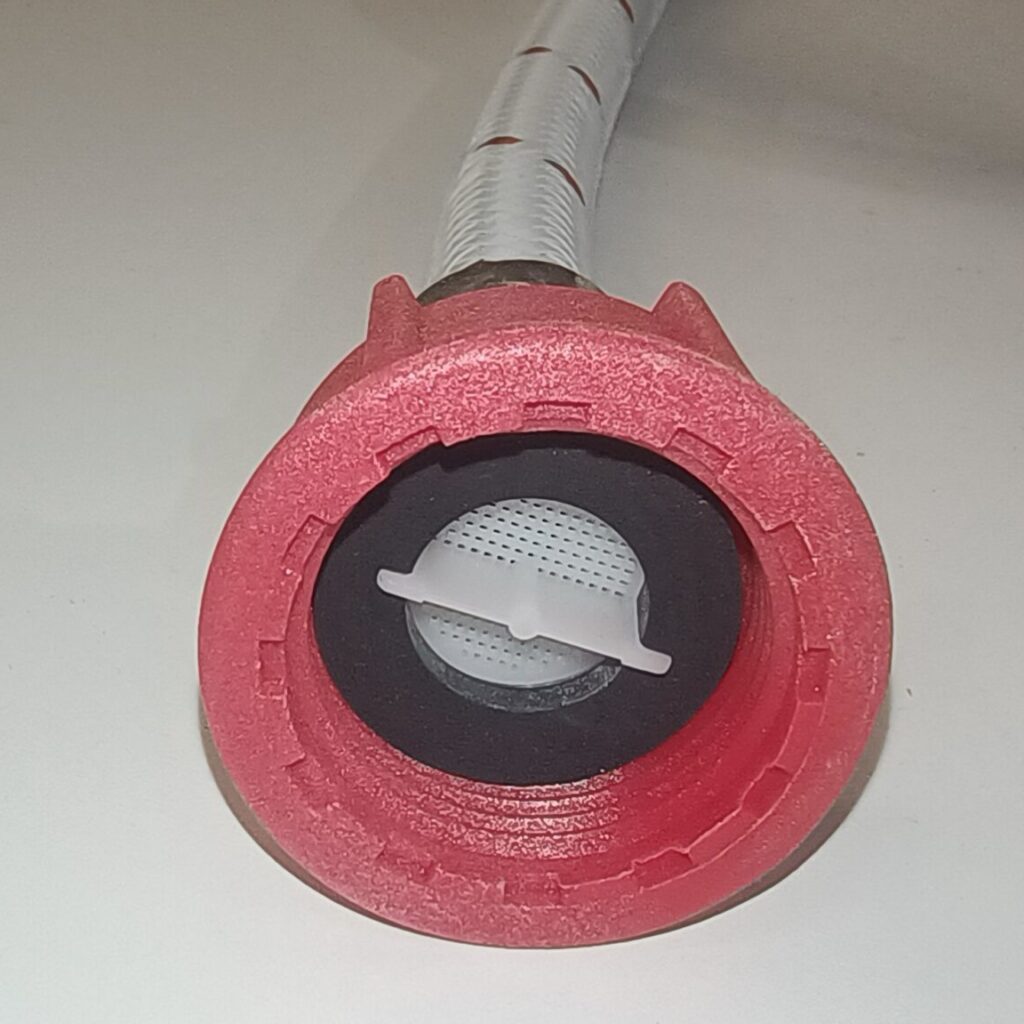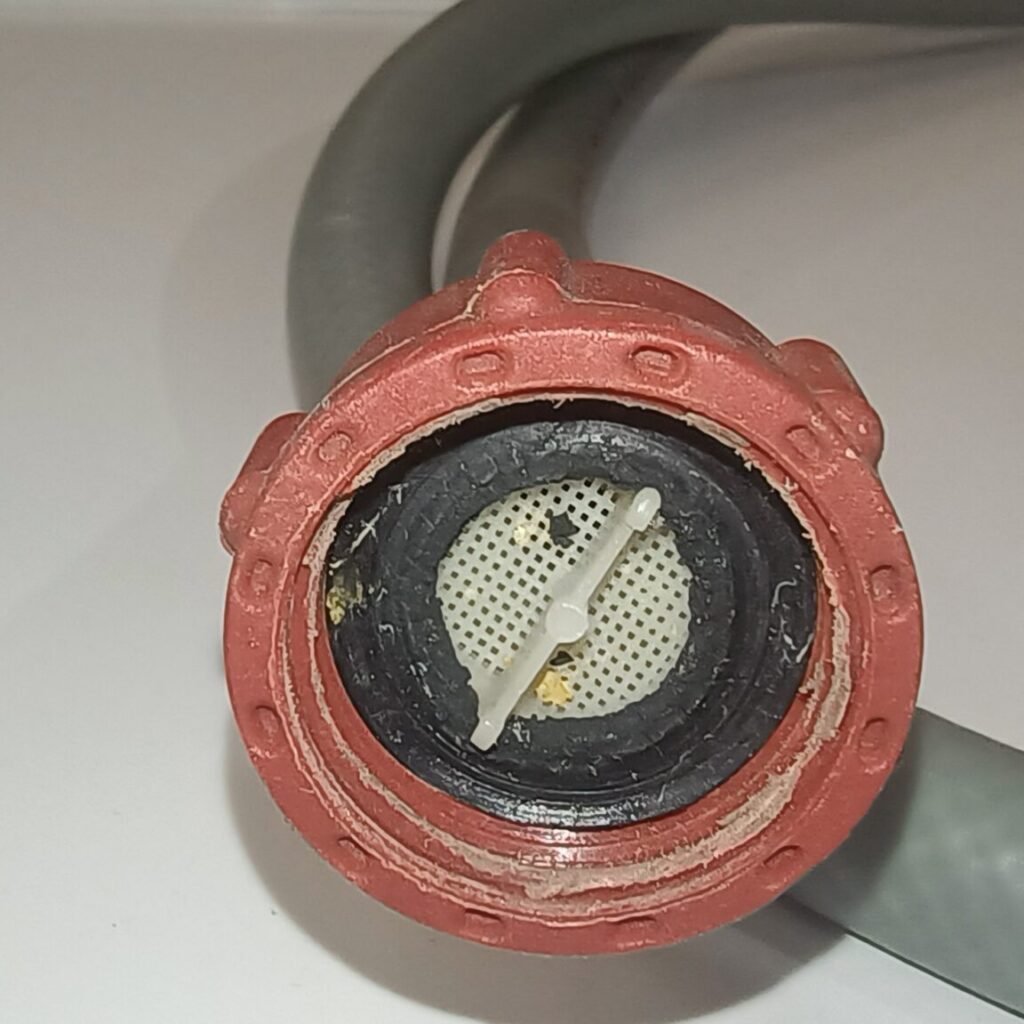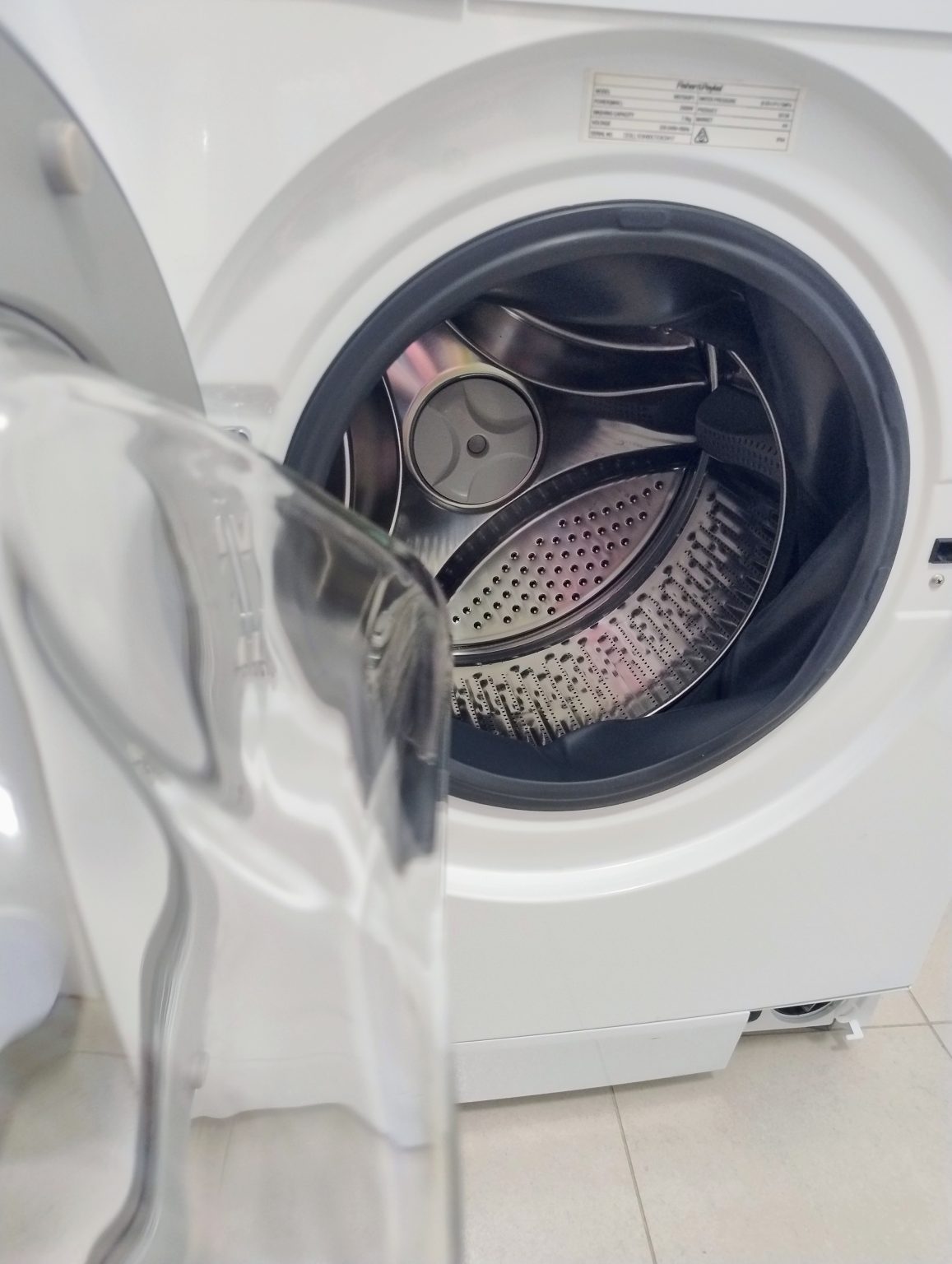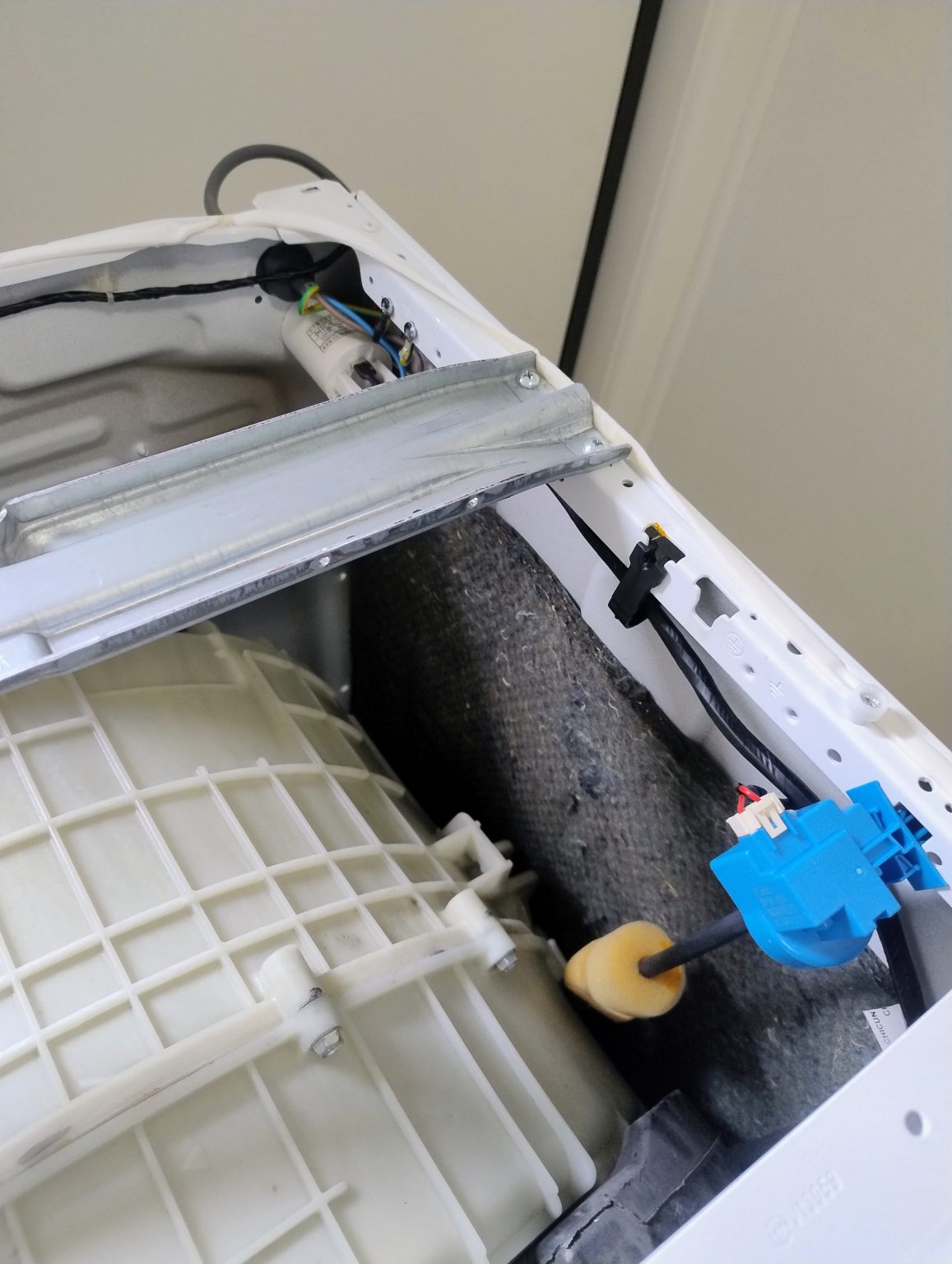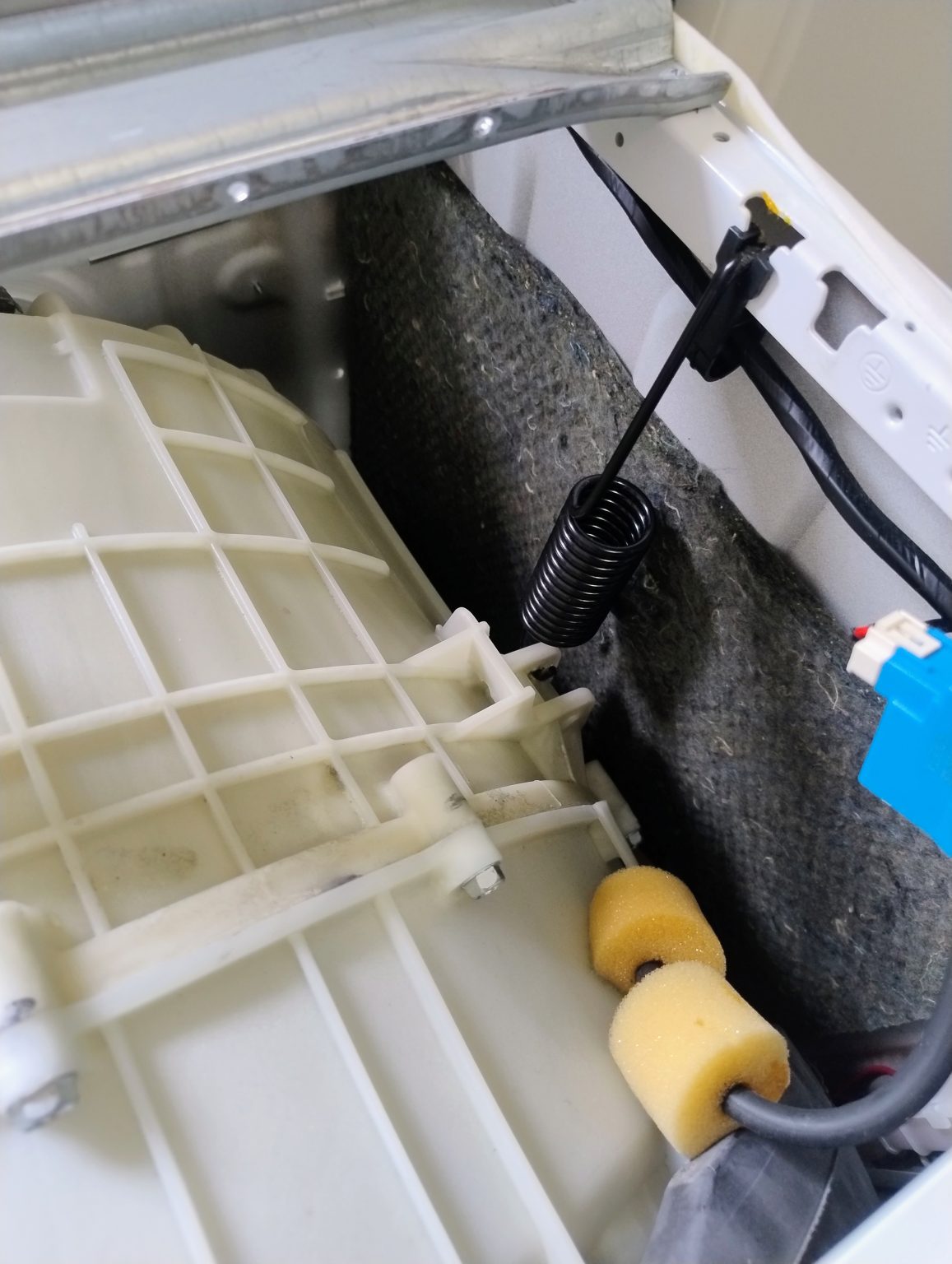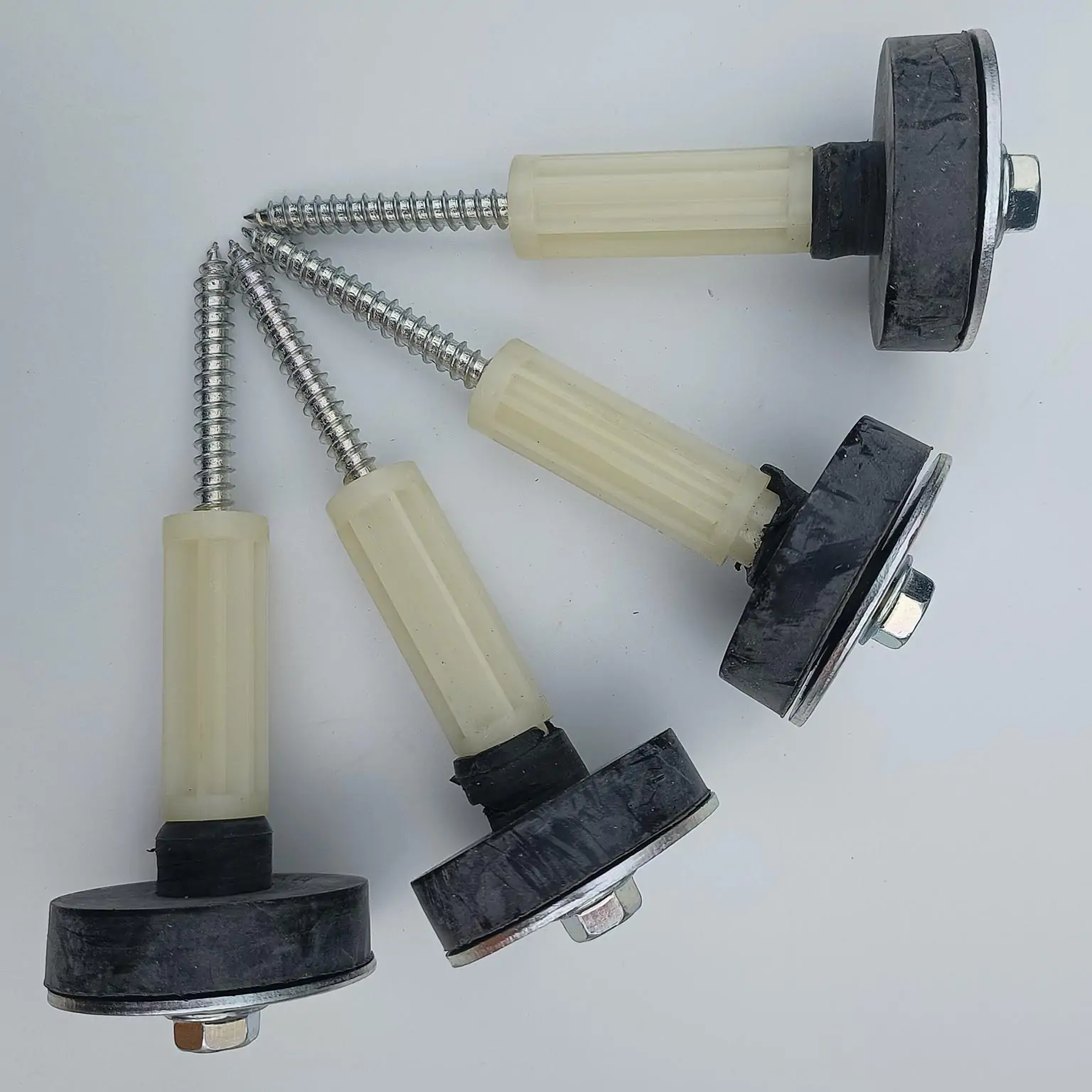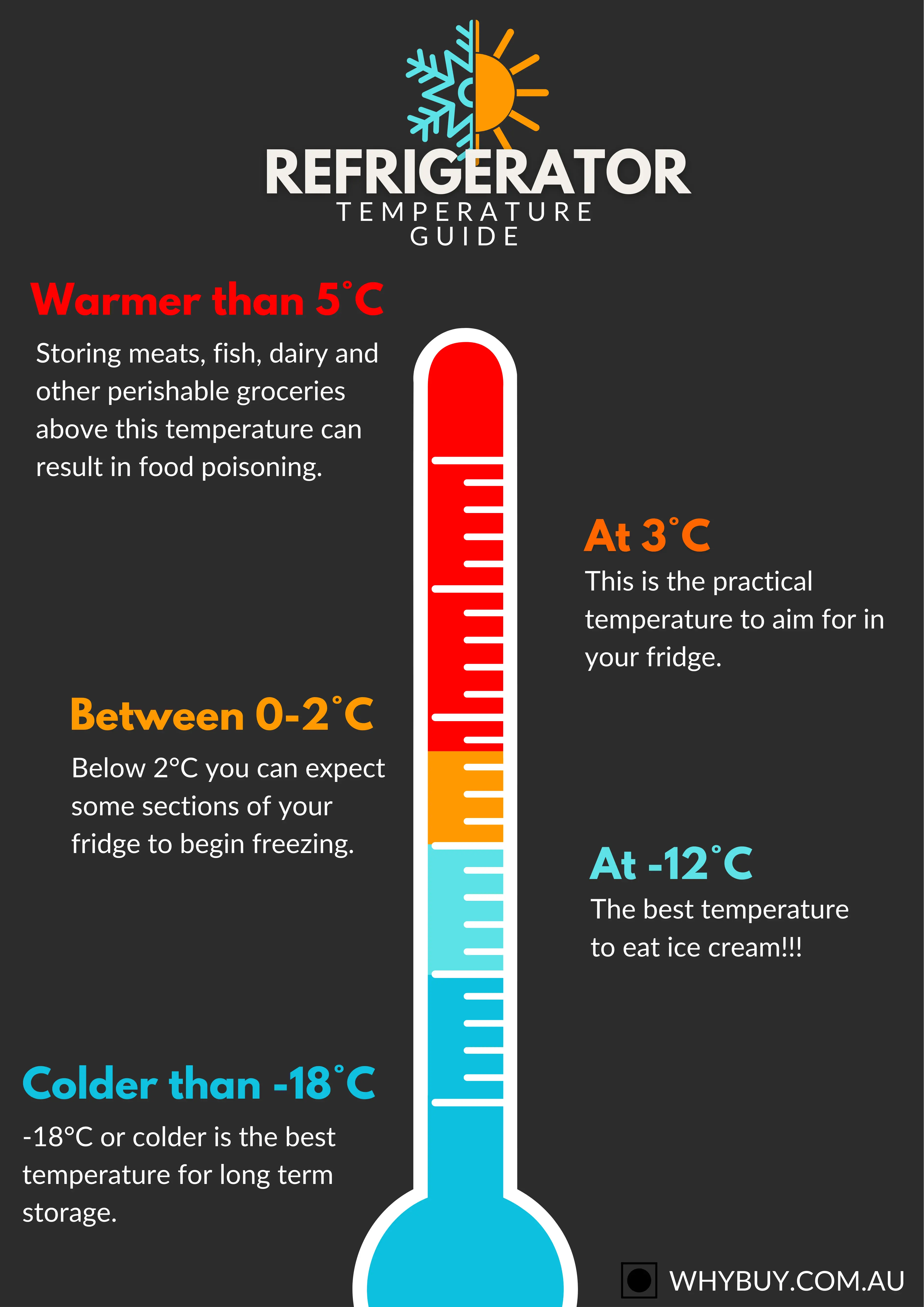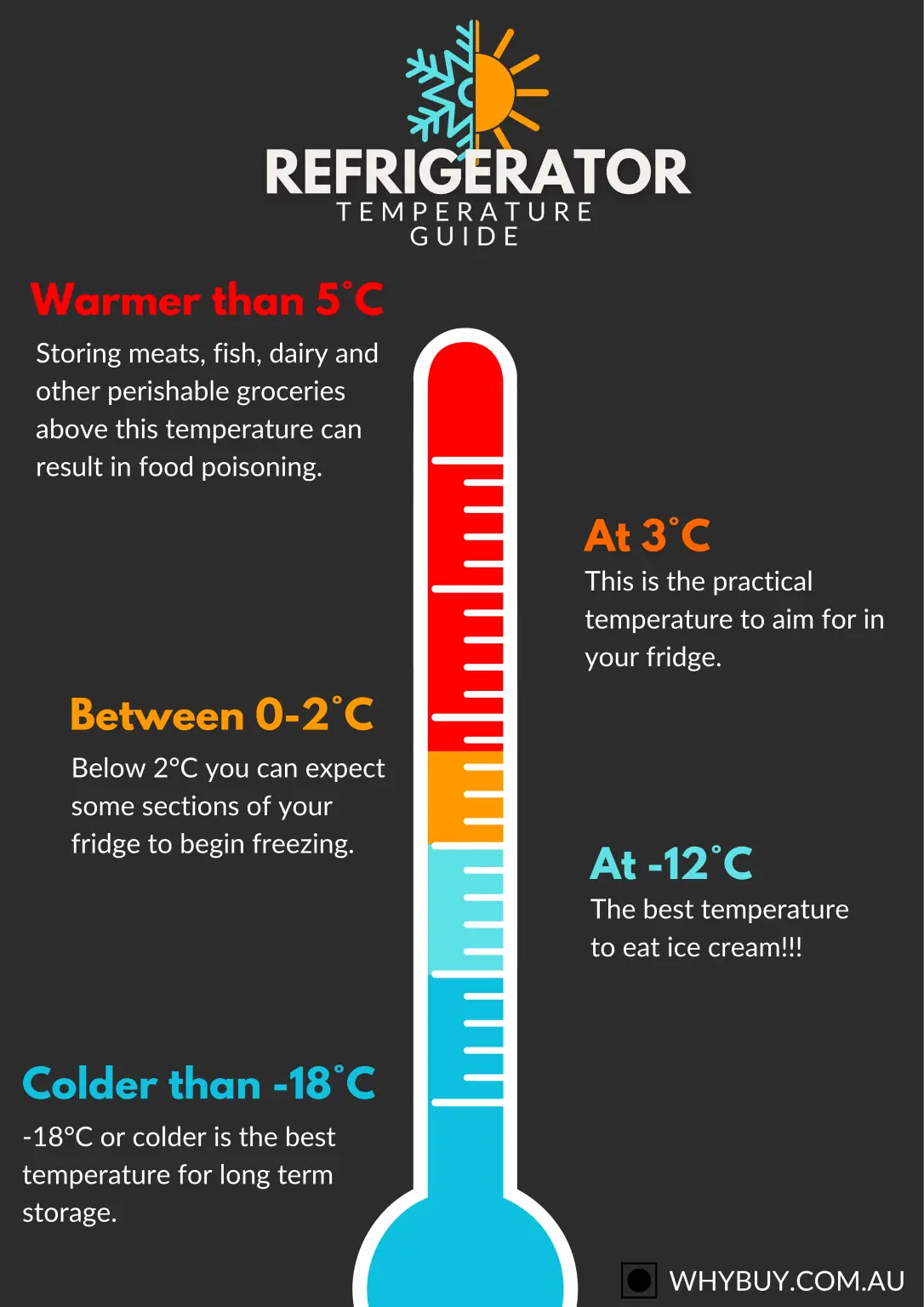Moving a washing machine can seem daunting, but with the right know-how, it’s a task you can handle with confidence. As an appliance delivery professional at Whybuy, I move washing machines every day. My experience has taught me the ins and outs of safely transporting these essential household appliances. Here, I’ll share with you the in depth steps and precautions you need to take to ensure a smooth move. I recommend you read this guide from start to finish before you attempt your move, sometimes you may want to proceed with one step before another, or you’ll pick up a tip later in the guide you may want to use earlier.
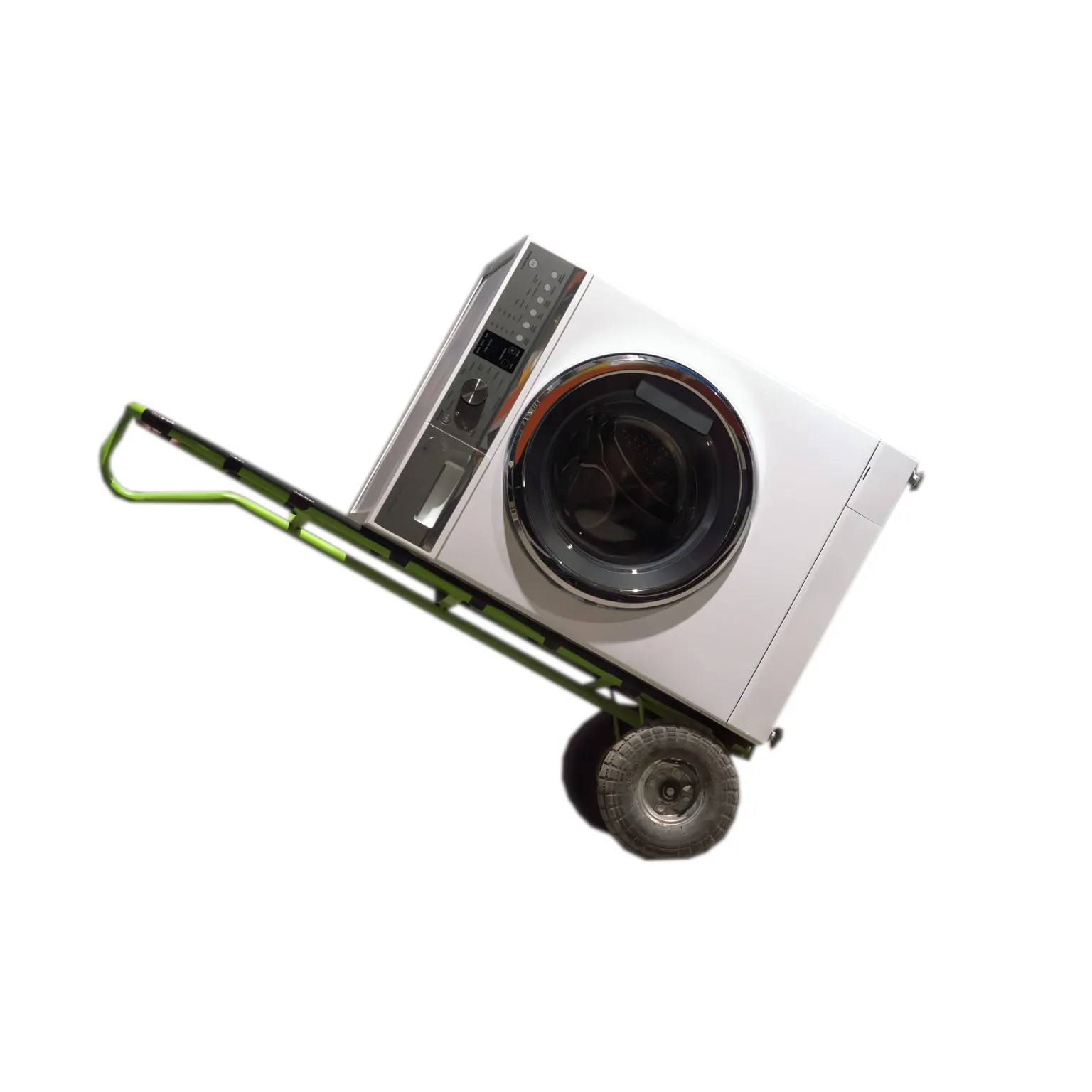
Uninstalling a Washing Machine
Find the Taps and Turn Them Off
Generally the taps will be directly behind the washing machine or in a cupboard next to the washing machine. If you have a dryer stacked on top of your washer you may need to bring it down to access the taps.
Disconnecting the water inlet hoses
Method 1: Remove the Hoses to Minimise Mess
Sometimes it can be quite difficult to remove the water inlet hoses, especially if they haven’t been disconnected in years. To detach the inlet hoses, you will need to turn the fitting counterclockwise, as viewed from the back of the hose. If minimising water spillage is a priority, begin by disconnecting the hose fitting at the lowest point. This approach allows for more effective management of the release of trapped water. By disconnecting only one end of the hose initially, the water remaining in the hose will stay contained due to air pressure and vacuum formation, provided you handle it gently. Removing the lowest connection first offers more flexibility in choosing where to release the trapped water. After detaching one end of the hose, lower it into a sink, the washing machine, a drain, bucket or bowl – ensuring it is positioned at a lower elevation than the still-attached end of the hose. Then, proceed to unscrew the still-attached end of the hose; the trapped water should flow out in a controlled manner.
Once the hoses are removed its important to check the taps are not leaking. Because they are seldom turned off, they often seize up and become difficult to turn off properly or a drip goes unnoticed because it cannot leak while the hose is attached to it. Ideally you should cap off the water supply taps with a 20mm (3/4”) female pipe cap with a rubber washer inside before vacating the property to avoid damage from a leaking tap on the floor, or turn off the water at the mains when you leave.
Method 2: For Removing Stubborn Hoses
Sometimes containing water spillage isn’t a priority, especially when the hose refuses to budge or if you cannot access the hoses from the back of the machine. Particularly for under bench installations you may bee to remove the hoses from the taps first, as you cannot access the hoses on the back of the machine and you cannot pull the washer out from underneath the bench as the hoses are not long enough.
If you’re facing a stubborn hose, it’s crucial first to ensure you’re turning it the correct way. You should be directly facing the connection from behind it and then turn it counterclockwise. If you’re viewing the connection from above, side on, or directly in front, and you’re turning it counterclockwise from your perspective, you might actually be tightening it further. A helpful trick if you’re uncertain is to use a socket wrench, if available. Set it to turn counterclockwise, position it behind the fitting as though you’re about to use it for removal, and then turn. This method can help you orient yourself and ensure you are indeed loosening the fitting.
If you’ve confirmed you’re turning the right way but still face difficulty, it’s likely the hose has been over-tightened. Over time, hoses can become even tighter than when first installed. This issue is often compounded by the rubber washer inside the fitting adhering to both the hose and the inlet valve on the machine, creating a seal you need to break. Additionally, the water pressure within the hose can further secure it in place. If removal proves challenging, start with the hose end that’s more accessible. Loosening one end can make removing the other end significantly easier by releasing the water pressure in the hose. If manual efforts fail, it’s time to use a tool. A self-adjusting, pipe, or strap wrench can efficiently handle the task.
For those without tools or a preference not to purchase them, there’s another technique, albeit with some risk of damaging the hose. Washing machine hose ends typically differ—one is straight, and the other has a 90-degree plastic elbow, which is usually connected to the washing machine’s back. However, it can be found on either the tap or the machine’s back. By gripping both the elbow and the hose’s rotational end and turning counterclockwise, you can gain the leverage needed to loosen the hose. After turning as much as possible, hold the rotational part to prevent it from tightening and twist the elbow clockwise with your other hand. Repeat these steps until the hose is loose enough for removal. Be cautious, as this method may lead to breaking the plastic elbow, damaging the rubber washers, or the hose itself.

Inspect and Clean the Hoses
Once removed, inspect the hoses for signs of wear, such as cracking or damage. Hoses older than five years, or those showing signs of damage such as cracking or wear, should likely be discarded. Within one end of the hose, you should find a small filter screen. This is an ideal time for an inspection, especially if your water comes from a tank, you have old rusty pipes, or your water supply is prone to dirt. If the filter is clogged with debris, a toothbrush and soapy water can often clean it effectively. Alternatively, soaking the hose end in a bleach solution for a few hours may dissolve the debris, but be cautious as this can damage the metal coupler connecting the hose to the fittings.
The filter is typically removable but handle it with care, it’s usually made of plastic, and is fragile and prone to breaking. Before removing the filter, the rubber washer must be taken out. Use a small flathead screwdriver to gently pry under the rubber washer, being cautious not to damage it. Aim to flick the washer out of the fitting. Once removed, a small pair of pliers can usually grasp the flat bar in the middle of the filter, allowing it to be pulled out easily. Alternatively, use the screwdriver to pry the filter out by working it from one of the edges where it meets the body of the hose fitting. However, if the filter is severely blocked after years of use, it might be more practical to replace the hoses entirely rather than attempting cleaning.
Examine the Water Valves
We should also examine the water valves located where the hoses attach to the back of the washing machine. Often, you’ll find an additional screen filter made of metal or plastic in this area. These filters can usually be removed by gently using a pair of pliers to pull on the filter’s tab. Sometimes, you may need to use a small flathead screwdriver to pry out the screen. Removing these filters can be a delicate task; they are easily bent or damaged, so proceed with caution. If a filter becomes damaged, the most cost-effective solution might be to source a replacement from a defective valve, potentially with the help of a second-hand appliance repair professional who could offer a budget-friendly option. Alternatively, you might find yourself needing to replace the entire water valve. Running the machine without these filters is not recommended due to the potential for damage to the appliance. Washing machines have these screen filters in their hoses and inlet valves because the water valve mechanisms are fairly delicate pieces of engineering. It only takes a small bit of debris in the wrong spot and the water valve gets jammed open and the washing machine floods. I wouldn’t take the risk.
Disconnecting the Waste Water Hose
The waste water hose or drain hose can usually be identified as a corrugated pipe, which is wider than the inlet hoses. It’s better to disconnect the water inlet hoses before tackling the wastewater hose, as the latter is likely to be slimy and mouldy, particularly towards its end. Removing it first means you’re more likely to touch it more than you need to and spill unsanitary water on yourself, making things yuckier than they need to be. Sometimes though, you might need to disconnect the wastewater hose first to give yourself better access to remove the water inlet hoses.
There are generally two ways this hose is connected to the sewer system: either simply inserted into a standpipe, or a hole in your laundry trough, or hooked over the side of a laundry trough. Ideally it ought to be secured with a plastic U-bend bracket, or it might be connected via a barbed hose connector on the trap (U-bend) of the laundry sink adjacent to the machine. In the first scenario, the hose should pull out with minimal effort. In the second, removing the hose from the trap requires caution to avoid breaking the barbed connector, necessitating replacing the trap.
Method 1: Try this First
The drain hose is typically secured with a clamp. Examine the clamp to determine whether you need a socket, flathead screwdriver, or Phillips screwdriver to loosen it. Turn the clamp screw counterclockwise to loosen. This step can be tricky as the clamp may rotate, requiring you to hold it steady while unscrewing, ideally without stabbing yourself with the screwdriver.
Once the clamp is loose, slide it down the pipe to access the seal between the drain hose and the barbed connector. The hose usually has adhered to the connector over time, making the seal difficult to break. Exercise care at this stage to avoid snapping the connector. Avoid yanking the hose; instead, try twisting the end of the hose to break the seal, being careful not to twist from the corrugated section, only the rubberised end. If the hose rotates on the connector, you’ve successfully broken the seal. Gently pull and twist the hose to remove it, being prepared for a small amount of residual yucky water to spill out.
Method 2: For Stubborn Drain Hoses
If the above proves difficult, another method involves using a flathead screwdriver. Carefully insert the screwdriver under the lip of the drain hose at the connection point, working it further in gently to avoid puncturing the hose. Ideally you want the screwdriver to go all the way in to the end of the barbed connector, but this might not always be realistic, so just work it in as far as you can. Now lever the hose off by pulling the screwdriver gently outward, and work it in and out a few times as required, each time coming further out. This technique, while counterintuitive for beginners, effectively removes the drain hose without damaging the connector, but does carry risks in damaging the drain hose, which might not matter particularly, if at the new installation the drainhose will be connected via a standpipe or simple u bend bracket instead.
Sealing the Barbed Connector
Sealing the resultant hole left in the trap by the drain hoses removal is crucial to prevent leaks if the laundry sink is used. Options, ranging from average to good include sealing with duct tape, a rubber chair leg tip with a hose clamp, silicone sealant, or replacing the trap. When vacating a property, it’s often wiser to do nothing and leave the setup as is, since the next tenant is extremely likely to be installing their own washing machine the same way and your sealing it off just makes their life needlessly difficult. It’s wise to inform the landlord though to mitigate your liability and advise against using the sink.
Snapped Off the Barbed Connector - What Now?
If you’ve accidentally snapped the barbed connector on the sink trap, it’s usually not a major issue. Older traps are more likely to break due to the PVC they’re constructed of becoming more brittle with time. For newer homes, the trap is typically a standard component that can be easily replaced for under $10 at most plumbing or hardware stores. In cases involving older sewage systems where the correct part is no longer available, a plumber may need to modify the sinks drainage for a new trap. Alternatives for a temporary fix include using self-fusing silicone tape or silicone, or attempting a repair with PVC cement, though such repairs are unlikely to withstand reconnection of a drain hose in the future.
Stowing the Drain Hose
Securing the drain hose properly is ideal to prevent the spillage or syphoning of dirty water during relocation. Allowing the drain hose to drag on the floor almost guarantees water leakage. Many washing machines are equipped with specially designed clips on their backs for securing the drain hose. If these clips are unavailable or damaged, a practical solution is to secure both the drain hose and the power cable together. Create a ‘U’ shape with the drain hose just above the top of the washing machine, then wrap the power cord around this loop. Use a secure knot, such as a half hitch, or cable ties to keep it in place.
Draining the water from the machine for long term storage (front loader washers only)
Draining water from your front loader washing machine is a crucial step if it won’t be used for a month or more, particularly to prevent mould growing on and around the rubber door boot. However, the process requires careful consideration to avoid potential problems.
Don't Drain Top Loader Washing Machines
For top loader washing machines, unfortunately, there’s no straightforward method to drain any remaining water. While it might be tempting to tip the washer onto its side to remove some of the water, this approach often leads to more problems than solutions. Such an action can result in water and dirt coating internal components, such as the suspension system and control boards, which could lead to damage. Additionally, the drum might dent the case during this process, far from an ideal outcome. This method risks damaging the machine and is unlikely to remove all the trapped water, potentially leading to further issues down the line. A top loader washing machine is unlikely to leak during transport unless it is tipped over, so long as the drain hose has been properly secured, and isn’t laid on the ground which can lead to the water syphoning out of the machine.
When to Remove the Drain Pump Filter
Some sources recommend removing the drain pump filter to eliminate any residual water in the machine, preventing it from leaking onto other items during relocation. We would suggest this is bad advice, because it often causes more problems than it solves for the uninitiated. You should only remove the filter to prevent mould growth if the machine will not be used for longer than a month: if the machine will be placed in long-term storage, if the machine is being shipped internationally, or if the machine exhibits issues with draining slowly or not at all, indicating a blockage in the filter or an obstruction in the drain pump.
Risks of Not Draining the Machine
Opting not to drain the water from the machine carries its own problems, but they’re easier for a novice to manage. Failure to remove residual water can affect the machine’s water level sensors, leading to misreadings and potential overflows. This is especially crucial for front loaders, as overflows can damage the bearings—an expensive problem often not worth the repair cost. Upon reinstallation, closely monitor the machine during its initial fill cycle. For front loader machines, stop the cycle if water levels rise above a third of the machine’s door; for top loaders, stop if it exceeds the pre-set water level. Switch the cycle to ‘spin’ before commencing a new cycle and repeating the above. You should only need to do this once, then the machine should fill correctly on the second attempt, but a third may be required. Once the machine has stopped filling at the correct height and the wash cycle has commenced, the risk has passed.
Removing the Drain Pump Filter
Accessing the drain pump filter typically involves opening a small flap or door on the lower left or right side of the washer. Opening this reveals the filter’s front, which unscrews counterclockwise. Be prepared with a towel, as unscrewing the filter will release water trapped at the machine’s bottom. However, removing the filter isn’t always straightforward. Obstructions like coins, bobby pins and screws can jam the filter, making it difficult to remove completely or reinsert. In some cases, the filter’s turning mechanism may break off when you try and loosen a very tight filter, necessitating a replacement. Should the filter become jammed halfway through removal, and you’ve confirmed it’s fully unscrewed, use a long screwdriver to wedge it out. Position it between the filter housing and the inner front face of the filter. Carefully lever the screwdriver to wedge the filter out. Be aware that applying substantial force may be necessary and could lead to the filter breaking.
Again – We advise against tampering with the filter unless necessary, to avoid the inconvenience of needing a replacement during a move. Leave cleaning the filter for another day when you have the time and space to deal with a mishap. If the filter cannot be reinstalled properly prior to removal and transport, it will almost certainly leak water. While the quantity may not be substantial—perhaps a few hundred millilitres – it could be sufficiently dirty to stain carpets and fabrics. However, if the filter is left undisturbed, the likelihood of any leakage is minimal.
Using the Pump Outlet Hose for Draining
Adjacent to the filter, there’s usually a small rubber oumo outlet hose with an inserted cap. This hose offers a safer and more controlled alternative for draining water from the machine. Again we don’t recommend draining the water unless the washing machine will not be used for a month or more. Placing a tub or bowl below and removing the cap allows the water to flow out freely. This method is not without risks—the hose inside the washer is often intentionally kinked, requiring a moderate pull to straighten and facilitate water flow. Pulling too hard could damage the hose, necessitating replacement, and leaving a leaky washing machine to transport in the interim, while not pulling hard enough might prevent water from draining. If you have to drain the water from the machine prior to moving, use this method, and save removing and cleaning the filter for a day when you have time to deal with any issues.
In general, there’s seldom a need to remove water from the washing machine unless it will not be used for a month or more. Always ensure the caps for both the filter and the rubber hose are securely replaced before moving the machine to prevent any leakage.
Initially Moving the Washing Machine
With the washing machine now prepped and ready for relocation, it’s time to initiate the move. The first step involves maneuvering it out of its current position to a spot where a moving trolley or dolly can be easily positioned beneath it. A common challenge at this stage is the tendency of the washing machine’s rubber feet to adhere to the floor, complicating the initial effort to move it.
To overcome this, start by gently tilting the washing machine backward, ensuring you’re cautious not to damage the wall or any surrounding area. This action should help break the front feet free from their sticky grip on the floor. Next, carefully tilt the machine towards you—again, be mindful not to tip it over entirely. This movement aims to dislodge the back feet in a similar manner.
After the washing machine’s feet are freed, we must select the appropriate technique for moving it. The “walking” method, which involves a careful, rocking motion to shift the machine’s weight from side to side in small, measured steps, is highly recommended over dragging. This approach not only protects both the machine and the flooring but also offers superior maneuverability through tight spaces and around corners. However, walking the appliance comes with its challenges, such as the risk of accidentally slamming a corner of the washer into a wall and the difficulty in controlling the heavy appliance, as well as the risk of injury, particularly for those of us who are not specialised appliance movers.
Dragging the washing machine can lead to undesirable marks, scratches, or deeper gouges in your flooring, a risk that’s particularly pronounced with delicate surfaces like hardwood or vinyl. Additionally, the rubber coating on the washing machine’s feet may have worn down to bare metal over time, especially if the machine has been dragged before, further increasing the likelihood of floor damage. Dragging can cause the rubber coating on the feet to partially peel off, resulting in the washing machine sitting unevenly and making it challenging to adjust when reinstalled.
Despite the potential for damage, there are situations where dragging might be unavoidable, such as when the washing machine is positioned in a tight spot under a bench. In such cases, the best approach is to slightly tilt the machine, open the door, and firmly grasp the front face of the machine at the top of the seal to pull it out. This method minimises the risk of damage by reducing the friction and opportunities for a foot to get caught.

Installing the Transit Bolts (optional)
When moving a washing machine, whether you need to use transit bolts or shipping bolts depends on the type of machine and how far you’re moving it. Transit bolts are special screws that keep the inside parts of a front loader washing machine from moving around too much when you’re moving it.
Transit Bolts and Toploader Washing Machines
Top loader machines don’t use these bolts. You can insert blankets between the drum and case for protection, but this method is often more trouble than it’s worth. The blankets are likely to slip out, and the tipping the washer on its side to install them from underneath is more likely to cause the exact damage we were trying to avoid in the first place – the drum causing dents in the case due to excessive movement.
Installing Transit Bolts
Transit bolts are designed for front loader washing machines to secure the drum during transportation. My professional advice, based on daily handling of these appliances, is nuanced. For short distances, especially within the same premises or nearby, you probably don’t need to install the transit bolts. However, for longer moves, particularly interstate or international relocations, securing the machine with transit bolts is wise to prevent any potential damage from rough handling or emergency braking.
Front loaders rely on a suspension system comprising two springs at the top and 2-3 shock absorbers at the base, with transit bolts designed primarily to prevent the springs from detaching. A detached spring will lead to drum misalignment, visible as a distorted door seal and an off-centre drum visible through the door. If the machine is operated like this it can cause damage. While fixing detached springs might be straightforward for professionals and doable for amateurs, preventing such issues with transit bolts is simpler and safer. Using transit bolts also helps the machine move more steadily on a trolley because the drum inside won’t shift around and change the balance as you’re moving it.
If you’re just moving the washing machine a short way, like to a new home in the same city, you probably don’t need to worry about the transit bolts, especially if you’ve lost them or never had them. They’re mainly to stop things from going wrong if the machine tips over, so just take precautions to stop the machine tipping over. If you’re moving further afield though it’s a good idea to use them to keep your machine safe. If you want to know more about transit bolts, steps to take to prevent the machine tipping, and the installation and removal of transit bolts, we’ve written a full guide here.
Packing and Moving a Washing Machine
Finally we’re ready to move this washer! Ideally you want a moving trolley to move the washer out. It is advisable to wait until the washing machine is outside and ready to be loaded onto the delivery vehicle before wrapping it in a moving blanket or bubble wrap. This prevents the material from unravelling and causing accidents, especially when navigating stairs. When using a trolley, use a trolley with plastic protectors or place a piece of cardboard between the machine and the trolley to avoid paint marks transferring from the trolley onto the washing machine.
Using a Trolley
A moving trolley is the best method for safely transporting a washing machine, particularly if stairs are involved. You may want to secure the machine to the trolley with a ratchet strap or rope, taking care to position the strap to avoid scratching the appliance’s paint. This may not be practical if your move has lots of corners and you need to keep taking the washing machine on and off the trolley to manoeuvre it. For top loaders, trolley the machine from the back so that any cabinet damage Is more likely to be on the back and hidden once reinstalled. For front loaders, lift from the sides for better stability, especially if you have not used transit bolts.
Once outside exercise be wary of dips and bumps they can easily destablise your load. Be particular caution when navigating gutters and curbs at an angle, as this poses a high risk of tipping the appliance over and causing a mishap. If a tailgate lifter is available, simply place the washer on it. Otherwise, if the vehicle is low enough and you’re using a trolley, approach the vehicle so the washer’s legs are just above the vehicle’s platform edge. Then, carefully tilt and walk or slide the washer into the vehicle, ensuring not to trip over the trolley as it’s released to the ground. For vehicles too high without a lifter, enlist the help of another person to lift the washer into the vehicle. The technique for manual lifting is detailed in the “Carrying by Hand” section below.
Navigating Stairs
Don't Use a Stairclimber Trolley
Using a stairclimber trolley for moving appliances on stairs is not recommended due to two significant issues. Firstly, it doesn’t allow for breaks during the ascent or descent; once you start moving, you must continue until reaching flat ground, eliminating any opportunity for adjusting grip or resting. Secondly, stairclimber trolleys are too long. Adding a washing machine extends the trolley’s total length, making it too long to fit on stair landings and navigate turns, potentially causing you to get stuck between a step and a wall.
Use a Regular Trolley
Opt for a regular trolley with rubber wheels and air filled tyres and, if necessary, have someone assist by taking some of the weight, allowing for safer, step-by-step navigation. Exercise caution and treat the task with the respect it deserves, considering the real danger involved and the surprisingly high number of stair-related accidents annually. Ensure the stronger individual is positioned underneath to better control the washer in case of any mishaps. In this scenario, the best way to prevent injury where the top person is incapacitated is for the person below the washer to secure the washer by lowering their knee and thigh against the bottom of the washer and pressing the trolley wheels into the back corner of the step, laying the trolley down on the stairs. If the bottom person is incapacitated the top person may simply sit down on the stairs pulling the trolley wheel into the back corner of the stair and holding it there with the trolley resting on their knees.
Moving a Washing Machine Upstairs with a Trolley
- Teamwork is Essential: Moving a washing machine upstairs requires two people for safety and efficiency. Position one person above the washer and the other beneath.
Securing the Washer: If the washing machine is not strapped to the trolley, the individual pushing from below must be cautious not to apply excessive force, which could dislodge the washer from the trolley. - Clear Roles and Communication: Designate one person as the leader to coordinate the move. This person will count “1, 2, 3,” and on “3,” the person at the bottom pushes while the person at the top pulls. Take breaks to rest and regroup, ensuring everyone’s safety and maintaining energy for the task.
- Navigating Landings and Taking Breaks: As you near a landing, be aware that the person at the top risks being squeezed between the wall and the trolley. This stage requires particular care and finesse to safely navigate.
Moving a Washing Machine Downstairs with a Trolley
- Using Gravity: When moving the washer downstairs, gravity will assist in the process, potentially reducing the need for additional help. However, a second person positioned below the washer can provide stability and share the load.
- Controlled Movement with Excellent Timing: Approach each step with caution. As the trolley reaches the edge of a step, pull back and take the weight to ease the washer down, minimising the impact of the descent.
- Maintaining Alignment: Ensure the trolley is aligned straight with each step. An angled approach can increase the risk of wobbling or losing control.
- Safety Precautions for the Helper below: If someone is assisting from below, and the washer is not strapped to the trolley, they should be careful not to lift the washer off the trolley. Watch for hazards like walls or railings that could injure hands, especially as the washer might shift, bounce or roll upon impacting each step.
Carrying by Hand
If a trolley isn’t available, manually carrying the washing machine is an alternative, though it’s important to note they are heavy: a front loader typically ranges from 70-90kg, and a top loader from 30-50kg. This task requires two physically fit individuals, preferably wearing gloves or having durable hands.
Carrying a Front Loader Washing Machine
Start by removing the soap dispenser drawer for a secure grip with one hand, while the other hand should grasp the back corner of the machine near the water inlet. Avoid lifting the appliance by its top or lid, as it is usually secured with only two screws through plastic mounts and cannot bear much weight. Once the machine is angled for movement, the second person should grip the machine’s feet at the front and back closest to them. These parts may be damp and dirty, making gloves advisable for a more comfortable grip. Once outside, set the washer down beside the delivery vehicle for a brief rest before the next stage of lifting.
Carrying a Top Loader Washing Machine
Start by securing the lid with some electrical tape. Electrical tape won’t leave difficult to remove residue like other tapes and is easily removed following transport. Now tilt the washing machine backwards with one person holding the washer from the back. Now the second person should reach underneath the washer from the front and lift it up. Spiders often like to live in this spot so gloves are advised to prevent any panic dropping of the machine.
Lifting onto a vehicle
Lifting a Front Loader Washing Machine onto a Vehicle
When lifting a frontloader washer onto a vehicle from the side of the vehicle, position it so the front of the washer faces the back of the vehicle. If lifting from the back of the vehicle, position the washer so that one of the sides is facing towards the front of the vehicle. Position one person on each side of the washer. Tilt the washer away from the vehicle, placing one hand on the top side of the washer that’s furthest from the vehicle. Then, with your other hand, grasp the bottom of the washer closest to the vehicle and lift it onto the corner of the vehicle’s platform. Carefully tilt and then walk the appliance onto the vehicle.
Lifting a Top Loader Washing Machine onto a Vehicle
For top loader washing machines we follow the same procedure as above for a frontloader. If you’re moving a top loader on an open ute, ensure the front of the washing machine is facing backwards and use electrical tape to keep it securely closed. If the lid opens unexpectedly, it could not only be damaged itself but also cause damage to other parts of the washing machine. The lid can easily detach completely and become a dangerous projectile to other road users.
Vehicle Positioning
Moving a Washing Machine in a Ute or Trailer
To ensure the safe transportation of a washing machine in an open ute, follow these steps to minimise risks and protect your appliance.
- Positioning the Washing Machine: Place the washing machine at the front end of the ute’s tray, ensuring it is centrally aligned. The back of the washer should face the cabin. Centring the machine on the tray is vital. Incorrect positioning increases the risk of the washing machine tipping over during cornering.
- Securing with Ratchet Straps: Utilise ratchet straps to secure the washing machine from each side of the ute, going over the top of the appliance. Ratchet straps provide additional security against the forces encountered during turns and bumps. However, be aware that ratchet straps can sometimes loosen or break, especially if the washer has not been centred. If the washer hasn’t been centred, a racthet strap actually increases the chances it will tip over during cornering. Therefore, positioning the washer in a way that it has limited movement against the cab at the end of the tray, is recommended.
- Preventing Tipping and Movement: The primary concern during transportation is to prevent the washer from tipping over, particularly during sudden stops, which are often beyond the driver’s control. By positioning the washing machine against the wall of the ute’s cabin and ensuring it is centered on the tray, you mitigate the risk of it tipping over. This also helps prevent the appliance from rocking over speed bumps. The correct positioning and the use of straps are crucial in keeping the washer stationary.
Moving a Washing Machine in an Enclosed Truck
When transporting in an enclosed truck, we don’t need to worry about centring the machine or placing it at the front, but the use of ratchet straps is more important. Position the washing machine against any wall of the truck. The back of the washing machine should face the wall, with the front facing towards the interior of the truck.
Secure the washing machine to the truck wall with ratchet straps. Attach the straps to the strapping points and around the front of the washing machine, ensuring they are tight and secure.
Moving a Washing Machine in a Van
Van is a pretty broad term. If you have a van that you cannot stand inside without ducking down, this is what we mean. If you have a full height van with proper ratchet strap points, follow the instructions above for an enclosed truck.
When transporting in an enclosed van without strapping points your best option is to place it as close to the front of the cargo area as possible, on one side of the van, wedging it on the sides with moving boxes or moving blankets to prevent it tipping over in corners. Drive carefully to avoid the washing machine from moving around, and maintain an awareness that there is a poorly secured 80kg projectile with you in the vehicle.
Moving a Washing Machine in an SUV, Hatchback, or Station Wagon
- Protective Measures: Begin by laying a moving blanket over the rear bumper and the loading area to safeguard your vehicle from scratches or dents. This is crucial to maintain the car’s condition.
- Upright loading: Attempt to lift the washing machine vertically up and over the threshold into the cargo area. Keeping the machine upright is preferable but not always realistic.
- Lay the machine down if needed: If the vehicle’s interior height is insufficient, you may need to lay the washer down. Position front loaders on one of their sides, and you should empty the water from the machine before loading it as described previously to minimise the leakage. Similarly, lay top loaders on their side to prevent control board damage from leaking water. Be prepared for minor water leakage especially with a top loader. Top loaders might have springs disengage, and front loaders could suffer if transit bolts aren’t used. Using transit bolts when transporting a washer on its side is highly recommended to prevent the significant risk of spring detachment.
- Ensuring Stability: Push the washing machine far enough into the vehicle to prevent it from potentially impacting and smashing the rear window upon closing. Use wedges or additional blankets to secure the gap between the washer and the rear of the cargo compartment, ensuring the machine doesn’t slide into the rear windshield during transit. Use blankets to wedge the washing machine on each side and in front of it as well to prevent it moving. Remember you are now driving with a significant projectile in the event of emergency braking, or an accident, so drive carefully!
- Post-Transport Care: Once the washing machine is positioned upright at its destination, wait 24 hours before use. This pause allows any moisture that may have come in contact with the electronics to dry, reducing the risk of electrical issues. Top loaders are particularly vulnerable to control board issues if transported on their backs, hence the emphasis on side positioning. However, this does pose a risk of cosmetic damage to the appliance’s cabinet. If a top loader has been transported on its back it is recommended to leave it unplugged for a week or more to minimise the risk of control board damage.
Moving a Washing Machine in a Sedan or Compact Vehicle
Attempting to fit a washing machine into the backseat, front seat, or boot of a sedan or compact car is highly challenging and not recommended. The risks include potential damage to the vehicle, the appliance, and safety concerns due to the appliance acting as a projectile in the event of abrupt stops or accidents. Transporting a washing machine poses a risk of water spillage, which can further complicate the process.
If Attempted Compact Appliances Only
Only very compact models might feasibly fit, and even then, the risks probably outweigh the benefits. Consider the potential for damage to the car’s doors and interior.
Reinstalling a Washing Machine after Moving
Once you’ve moved the washing machine to its new location, moving it inside is the reverse of moving it out, and the steps above cover off everything you need. Once you’ve got the washer into the laundry area where it will be installed proceed with the below.
Resetting the feet
When moving a washing machine from one location to another, we ought to reset its 4 feet to ensure it stands stably in its new position. It’s best to do this before moving the washer inside where space is more limited and damage more likely. If we don’t reset the feet at all it just makes it more difficult to get it stable when inside.
Firstly, it’s worth noting that some washing machines, particularly top loader washers, come equipped with self-adjusting feet, which automatically level the machine once it’s placed on the ground and started. For these models, manual adjustment isn’t necessary. However, for the vast majority of washers without this feature, you’ll need to manually reset the feet. Check your manual or Google your model if you are unsure.
Most washing machines have adjustable feet often with a lock nut, which can be turned clockwise or counter-clockwise to raise or lower each corner of the machine. All feet should be wound back into the machine as much as possible and should rotate freely.

Brand new washing machines typically have feet and lock nuts that spin easily by hand. However, the feet on older machines may seize or rust into place, requiring a spanner or wrench to break the corrosion. When using a spanner or wrench use it on the lock nut of you can, using tools on the rubber feet is likely to damage them. It’s not uncommon for a lock nut to have seized or rusted completely to the foot of the washer, and often there’s nothing you can do other than replace it. For a temporary fix you should move the affected foot to the front of the machine. If you have two or more feet with seized locknuts move them to one side of the machine, you don’t want them diagonally opposite each other. If you are unable to adjust a foot or remove it, its usually not a big deal, we just need to be aware of it and work around it. The fewer feet we can adjust, the harder it will be to get our washing machine stable when it is inside.
Tips to Make Foot Removal Easier
- If transporting the washer in a ute or truck, position it so two feet hang off the edge – being cautious to prevent the washer from falling – providing easy access to loosen them. Rotate the machine 180 degrees and repeat.
- If the washer needs to be laid down at any point, this also presents a good opportunity to adjust the feet. Alternatively, having someone tilt the washer on a hand trolley can offer convenient access for adjustment.
- If you need to lay the washer down at any point, that’s also a great opportunity to do it, or you can have one person tilting the washer on a hand trolley as well to give you access.
Transit Bolt Removal
Remove any transit bolts used during the move. Check out our guide here.
Positioning Your Washing Machine
- Proximity to Connections: Select a spot for your washing machine that’s near the necessary water, drainage, and electrical connections. Usually it is evident where the washing machine is intended to be installed.
- Stable Flooring Is Key: The importance of a stable foundation cannot be overstated. Avoid placing your washer on carpet or any soft flooring. A solid floor (it needn’t be level we can fix that later) is essential to minimise vibration and ensure smooth operation. Inspect the floor area for any signs of wear or rot, particularly if you’re installing in an older home. A slow leak from a washing machine can cause significant damage over time, make sure you don’t get blamed for previous damage as a tenant by reporting any damage to the landlord now.
Planning Your Connection
In most cases, the installation is straightforward—the taps are directly above the washing machine’s intended spot, and the drain hose simply feeds into a nearby laundry trough. Very little planning may be required and we can proceed to the next step. For more complex European Laundry or under-bench installations, a bit more planning may be needed. If the water and power connections are located in a cupboard adjacent to the washing machine’s location, consider the following steps:
- Power Cord First: Run the power cord through to the connection point first. The plug is bulky, but the cord itself is thin, making it easier to maneuver through tight spaces, and hard to fit the plug through if you route the other hoses first.
- Attach and Route Hoses: Connect the water hoses to the back of the washing machine before threading them through to the taps. You won’t have access to the back of the washing machine if it is going under a bench. Standard water inlet hoses are around 1 metre in length, if you find yours is not long enough you can buy longer hoses without much trouble.
- Drain Hose Last: After the water hoses are in place, thread the drain hose through. This sequence allows you to ensure that all components fit through the necessary spaces without obstruction. If you find your washing machine drain hose is too short its usually a relatively simple job to lengthen it with a couple of hose clamps a barbed connector and an additional length of drain hose.
- Avoid Hose Kinking: Be particularly vigilant to avoid kinking the inlet hoses in under bench installations. Braided hoses, are more prone to kinking compared to rubber hoses. A kinked hose will impede water flow and usually result in the washer not filling. If you can connect both ends of the hose loosely before tightening this helps avoid kinking. Additionally once the water is on and the hose is pressurised it is less likely to kink.
- Securing the Connections: With under-bench installations, once the washer is in place, inspecting and tightening the inlet hose connections on the back of the machine can be challenging due to limited access. Ensure these connections are secure during the initial installation to prevent leaks.
Connecting the Taps to Your Washing Machine:
Begin with the washing machine positioned a short distance from the wall. This allows easy access for making necessary connections. Initially, loosely connect the water hoses to the corresponding taps. Ensure not to kink the hoses during attachment; braided hoses are particularly prone to this compared to rubber hoses.
Identifying Hot from Cold
To identify the hot water supply if the taps aren’t labelled, attach a hose to one tap and direct it into a sink or bucket. After a few minutes, check the water temperature. The hot water hose, usually marked with red, should connect to the hot water inlet, while the blue hose is for cold water. Remember, the hot water hose is usually rated at 70 degrees celcius with the cold water hose typically rated to 25 degrees celsius and may burst if mistakenly used for hot water. Good quality hoses should be stamped with this information, but you may need to revert to the convention of blue is cold and red is hot.

Securing the Connections
Once the hoses are correctly identified and connected loosely to the taps, securely tighten the fittings to the correct inlet on the washer, before tightening the hoses at the taps. The inlet valves are usually coloured orange or red for the hot water hose and blue or white for the cold water connection. If you have a washing machine with only a cold water inlet this process is a lot simpler. Its desirable to avoid unnecessary leaks and spills; a dry area will help you spot any potential leaks more easily.
Turn on the taps and carefully inspect for leaks, listening for any hissing sounds that indicate a water leak. Taking a break and checking again after an hour can help ensure no delayed leaks appear from the tap or hose connections.
Addressing Leaks
It’s not uncommon for the hot water tap, especially if unused for a while, to leak from the top. Many front loader washing machines have only a cold water connection which sees the hot water tap go unused for long periods of time. This could be due to dried out rubber O-rings and seals. Operating the tap a few times might lubricate the seals enough to stop leaks.
Should you find a leak in the hose connections, never using Teflon tape, as it will make things worse. Instead, check the tightness of the connections and the condition of the rubber washers. Hoses should be snug but not overly tightened, and never require tools like pliers or wrenches for installation. If leaks persist, consider replacing the hoses or the worn washers as detailed earlier. Washing machine hoses should be replaced every 5 years.
Connecting the Drain Hose
The drain hose can be connected to the home’s sewage system in several ways, including a stand pipe, a hole in the laundry sink, a barbed connection on the laundry sink trap, or directly into the laundry sink if no special arrangement exists. Before proceeding, verify that any existing hole in the laundry sink is actually connected to the sewage system to avoid water simply draining onto the cabinet floor. Sometimes what looks like the drainage hole might not actually be connected, its important to verify.
Use a Hose Outlet U Bracket
Always use a hose outlet U bracket to secure the hose in place except for direct connections to a trap. While it might seem unnecessary, and you can often seemingly get away without one, failing to use one can lead to the hose dislodging and potentially causing a flood. This simple step can prevent significant water damage.
Maintaining an Air Gap
When connecting the drain hose, ensure there is an air gap between the end of the hose and any standing water in a pipe. When inserting the washing machine drain hose into a dedicated hole ion a laundry sink you don’t want to keep shoving it down as far as you can. A gap is essential to prevent possible sewage backflow into the washing machine, which is undesirable for obvious reasons.
Connecting to a Barbed Connector
Advice for Front Loader Washing Machines
In cases where the drain hose connects to a barbed connector on the trap under the sink, it’s important to check if the connector is open. From factory these connectors are usually sealed, requiring you to drill them out before use. If there is no washing machine drain hose connected to the barbed connector, anytime the sink is used water will leak out at this point. Confirm the connector is open by probing with a long, thin tool like a flathead screwdriver. If the connector is sealed it will need to be drilled open. It’s easier to remove the U-bend and drill it out in most cases. Once the drain hole is confirmed as open, the drain hose should just slide onto the connector. Push it down as far as it will go then secure it with a hose clamp for a reliable connection. While cable ties can serve in a pinch, hose clamps are recommended for reliability. While connecting the drain hose, you may need to push the washer closer to its final position to ensure the hose reaches without strain. When doing so, try to walk the washer back instead of sliding it to avoid damaging your floor or the machine’s feet.
Advice for Top Loader Washing Machines
Top loader washing machines usually have a different type of drain hose that does not lend itself to being connected to barbed connectors. It is possible to make a connection using a lot of Teflon tape, but it may not be the most reliable. Consider semi permanently siliconing the hose in place in these cases, or finding a replacement drain hose solution designed to seal over a barbed connection.
Plugging in the Washing Machine
This process is straightforward but requires attention to certain details to avoid potential risks.
Considering Powerboard and Double Adapter Use
Directly plug your washing machine into a wall outlet where you can. Double adapters pose a significant and real risk of fire, especially when a clothes dryer is the second appliance on the double adaptor. The primary concern with double adapters is that running a washer and dryer simultaneously will overload the adapter and the outlet, using double the rated power in most cases.
If a powerboard is used, choose one with overload protectors to mitigate fire risk. However, be aware that this setup may lead to frequent trips of the overload protector if both the washer and dryer are used together, as they are both likely to use close to the boards rated power output individually.
Extension Cord Use
You can use an extension cord but never use an extension cord with a double adaptor. This is a house fire waiting to happen.
Upgrading the Wall Outlet
Instead of using a powerboard or double adaptor, consider upgrading from a single to a double outlet. This task, which is relatively minor for a professional electrician, can prevent overloading issues and eliminate the need for potentially hazardous adapters and powerboards.
Positioning the Washing Machine
With the washing machine plugged in, it’s time to position it in its designated spot. Preferably, move the appliance by walking it to its final position. Sliding is an alternative if necessary, but it should be done with care, and you can expect marks on your floor. Usually rubber marks can be removed from a tile floor with a cream cleanser like Jif. Don’t turn on the washing machine at the wall yet, unless the power point will be obstructed by the washing machine when it is in place. We have a few more things to do.
Leveling the Washing Machine
Once in place, we want to make sure the machine is stable. A perfectly level machine is less important than one that doesn’t rock or move. Put away your level and simply visually inspect the machine. If it doesn’t appear noticeably on a lean front or back, it’s usually adequate. What we care about is stability, we don’t want it rocking.
Checking for Movement
To test stability, apply gentle pressure to opposite corners of the top of the machine (one front corner and one diagonal back corner) and attempt to rock it. Repeat this process for the other set of diagonal corners. Any movement or rocking indicates that adjustments are needed.
Adjusting the Feet
If you detect movement, the machine’s feet require adjustment. Generally, adjustments are only necessary on one of the front feet. Properly adjusted feet contribute to a quieter spin cycle, avoiding excessive noise or movement during operation. Typically, there’s no need to adjust the back feet if you’ve already reset all feet to their initial positions after the previous installation as covered previously. Adjust the relevant front foot by turning it counter clockwise until the machine is stable, with no discernible movement when you apply pressure. Once you’ve got the machine sitting correctly adjust the locknuts so that they sit against the base of the washer. If your locknuts are seized and this is not an option, the machine should be ok, but it’s worth keeping an eye on. Resist the temptation to chock the machine especially with cardboard or other soft materials, it rarely lasts long – replacement feet are relatively inexpensive and worth buying if required.
Final Checks and First Use
Before initiating the first use of your washing machine, completing a series of final checks is essential to ensure everything is set up correctly and to avoid potential issues.
Powering On and Leak Inspection
If you haven’t already, switch the machine on at the power point. Conduct a final inspection of the inlet hoses and their connections to ensure there are no leaks.
Drain Pump Filter Check for Front Loaders
For front loader washing machines, ensure that the drain pump filter and its rubber washer are clean. If you’ve removed the filter—which we advised against earlier—reinstall it carefully to avoid leaks. To reinstall the drain pump filter you usually need to align it with two tabs to insert it and then screw it in. It should screw in clockwise until you feel a very definite stop. If it feels very tight and you’re having trouble turning it this is usually the result of an obstruction in the filter housing, or a pinched rubber washer on the filter itself. A pinched rubber washer will result in a bad seal. Usually if the rubber washer is pinching the only solution is to buy a new filter, the washers are generally not available as a standalone part. When the washer has filled with water monitor the drain pump filter for leakage, it’s a very common point of leaks if you have removed and reinstalled the filter.
Running a Short Cycle
Turn the machine on and select a short wash cycle without adding any detergent. This initial run will help you identify any immediate issues with the setup without the complication of suds.
Monitoring During First Fill
Pay close attention during the machine’s initial fill cycle to prevent overflow, especially if you followed our advice earlier and transported the washer without draining the washer. An air pocket in the pressure system can mislead the washers control board about its water level, leading to excessive filling and overflowing. For front loaders, stop the cycle if water levels exceed one third of the door window. For top loaders, stop if water surpasses the pre-set level. Then, switch to a spin cycle before attempting a new cycle. Usually this issue resolves on the first attempt, but you may need to repeat this process once or twice until the machine fills correctly and proceeds with the wash cycle as expected.
Checking Drainage and Monitoring for Leaks
Ensure that the drain water is properly exiting into the designated drainage point and not ending up on your floor. Vigilantly check for any leaks or drips from the machine, using a flashlight to inspect underneath it. If you discover leaks that you can’t immediately resolve, it’s prudent to turn off the supply hoses and allow the area and machine to dry out completely. This pause helps distinguish between actual leaks and residual water from installation. The most common leak points when reinstalling a washing machine are the taps, the hose connections and the pump filter. It’s unlikely that the machine has been damaged in transport and is leaking internally. If leaks persist again after a few days waiting and you cannot find anything obvious, consider consulting a professional for a diagnosis.


